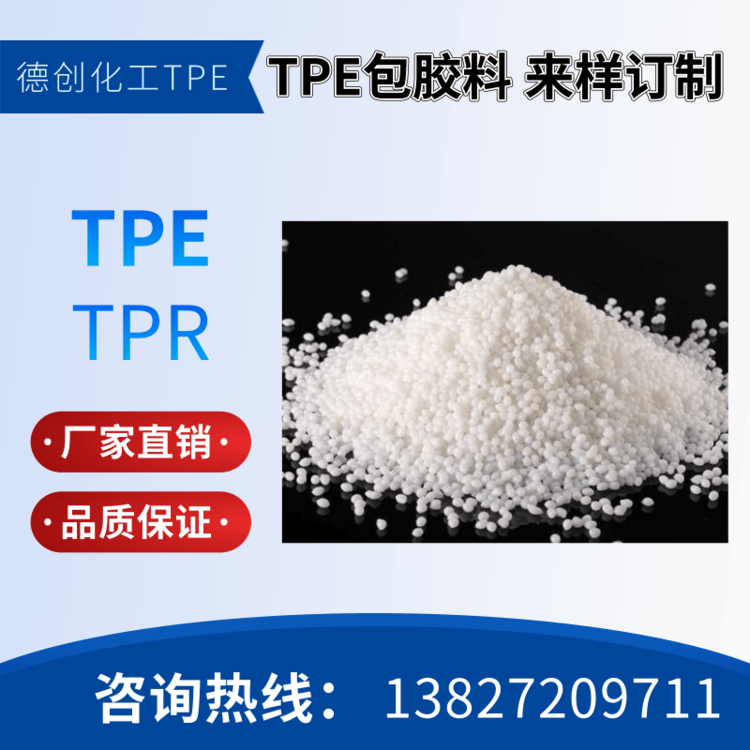What is the price of ABS material coated with natural TPE
Contact 138 2720 9711
Product details
Thermoplastic elastomer TPE can be processed by (secondary) injection molding without the aid of adhesive, overlapping and covering the surfaces of some common plastics such as PP,ABS,PC,PA and other products. For example, for electric tools, the soft rubber part at the handle position is a layer of TPE soft rubber coated with rubber. Here, the key point is that there is no adhesive or glue on the bonding surface between TPE and plastic package, then TPE and plastic can be quickly coated and bonded through direct injection molding. The author will make a brief analysis of this bonding for readers.
1. Adhesion mechanism of TPE-coated plastic: TPE and plastic have similar polarity.
Not all TPE can be bonded with plastic ABS,PC,PP and other excellent package adhesives. To bond between the two plastics, the formula of TPE soft adhesive is very important. In addition, the formula and physical properties of TPE soft adhesive required for different hard plastic varieties are usually different. The mechanism of secondary injection bonding between TPE and hard plastic is to adjust the TPE formula so that TPE and hard plastic have similar polarity or good compatibility, providing material performance support for injection bonding.
According to the viewpoint of polymer chemistry, the difference of solubility parameter SP between the two polymer materials is less than 0.5, and the two materials have good compatibility. Under appropriate conditions, the two thermoplastic materials with good compatibility can achieve good surface adhesion. Therefore, compatibility can be said to be the internal factor (internal factor) of whether TPE and hard plastic can adhere well.
2. The primary influencing factor of secondary injection bonding effect: suitable injection processing temperature.
The compatibility of materials provides the theoretical basis for the adhesion between TPE and hard plastic, but appropriate conditions are needed to promote the adhesion. This condition is the appropriate injection temperature. In order for TPE and hard plastic to bond, the injection temperature of TPE must generate enough energy to fuse at the joint surface of TPE and hard plastic. This fusing action, based on the good compatibility between TPE and hard plastic, can produce firm adhesion on the bonding surface. Appropriate injection temperature is the external condition (external cause) for TPE to bond with hard plastic.
3. Secondary influencing factor of bonding effect: surface tension of hard plastic material.
Common plastics, such as PP, ABS, PC, etc., have moderate surface tension. TPE can spread and bond on the surface of these materials quickly in the molten state. However, some plastics, such as POM (polyoxymethylene, also known as Saigang), PA nylon, etc. POM in particular, have good self-lubricity, or the surface tension of the materials is very small, making TPE difficult to spread and bond on the surface of POM quickly in the molten state with limited time, and it is difficult to realize coating and bonding.
According to the above analysis, we can explain the difficulty of adhesion between some common hard plastics and TPE.
I. TPE Encapsulated PP. Solubility parameter SP itself differs within 0.5, adhesion is very easy, just pay attention to the appropriate secondary injection temperature.
2. TPE-coated ABS, PC. The difference between the solubility of ABS and PC plastics and TPE is greater than 0.5. The compatibility of TPE with PC and ABS can be improved by adding polarity enhancer (or compatilizer) to TPE formula, thus achieving good adhesion.
3. TPE-coated PBT,PA, etc. The polarity of hard and soft materials is quite different, so the polarity of TPE needs to be adjusted. PBT and PA have high melting points, belong to semi-crystalline plastics, and require higher secondary injection temperature.




